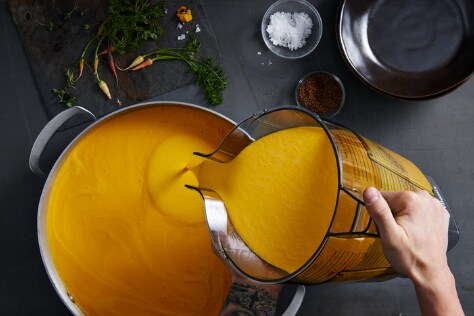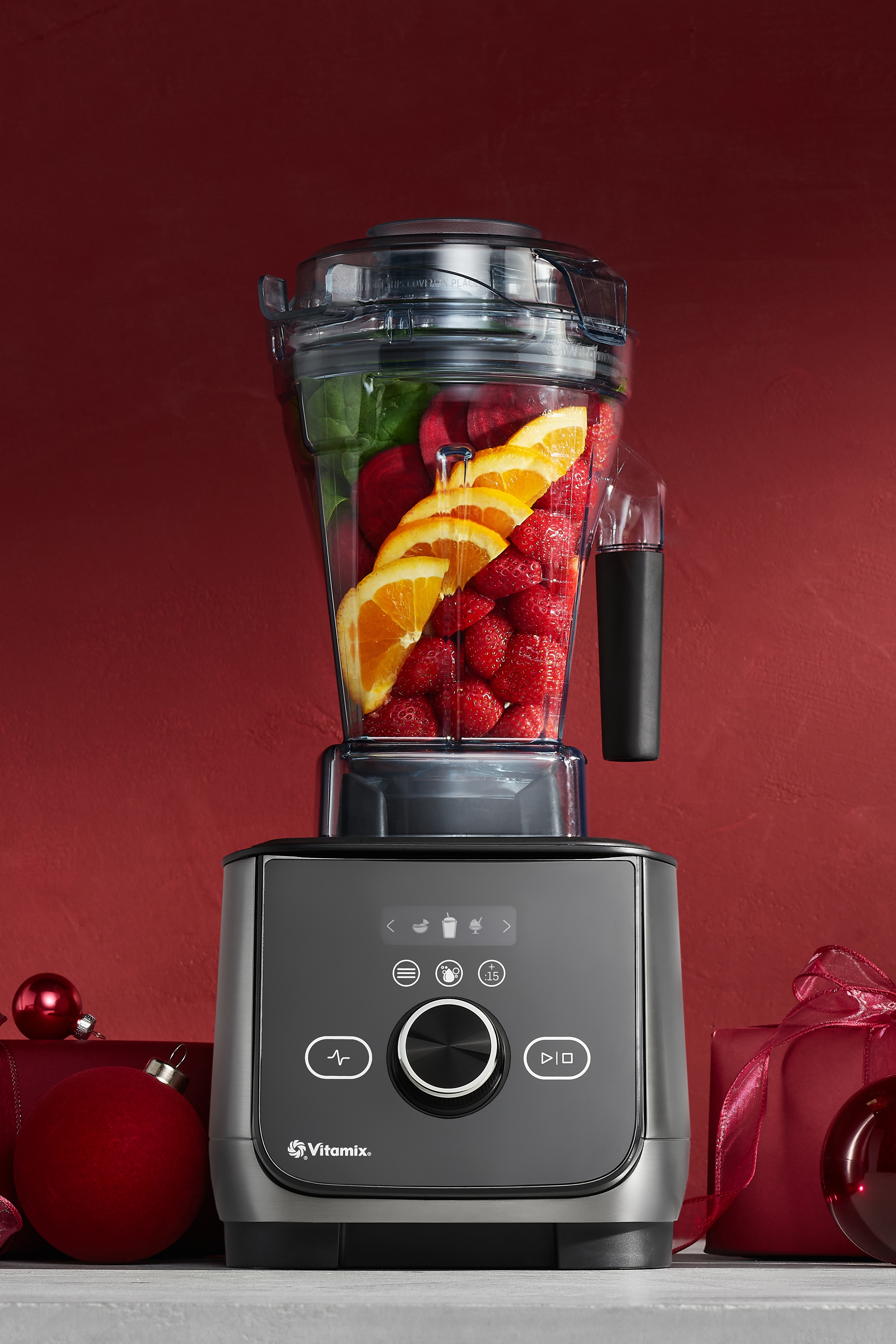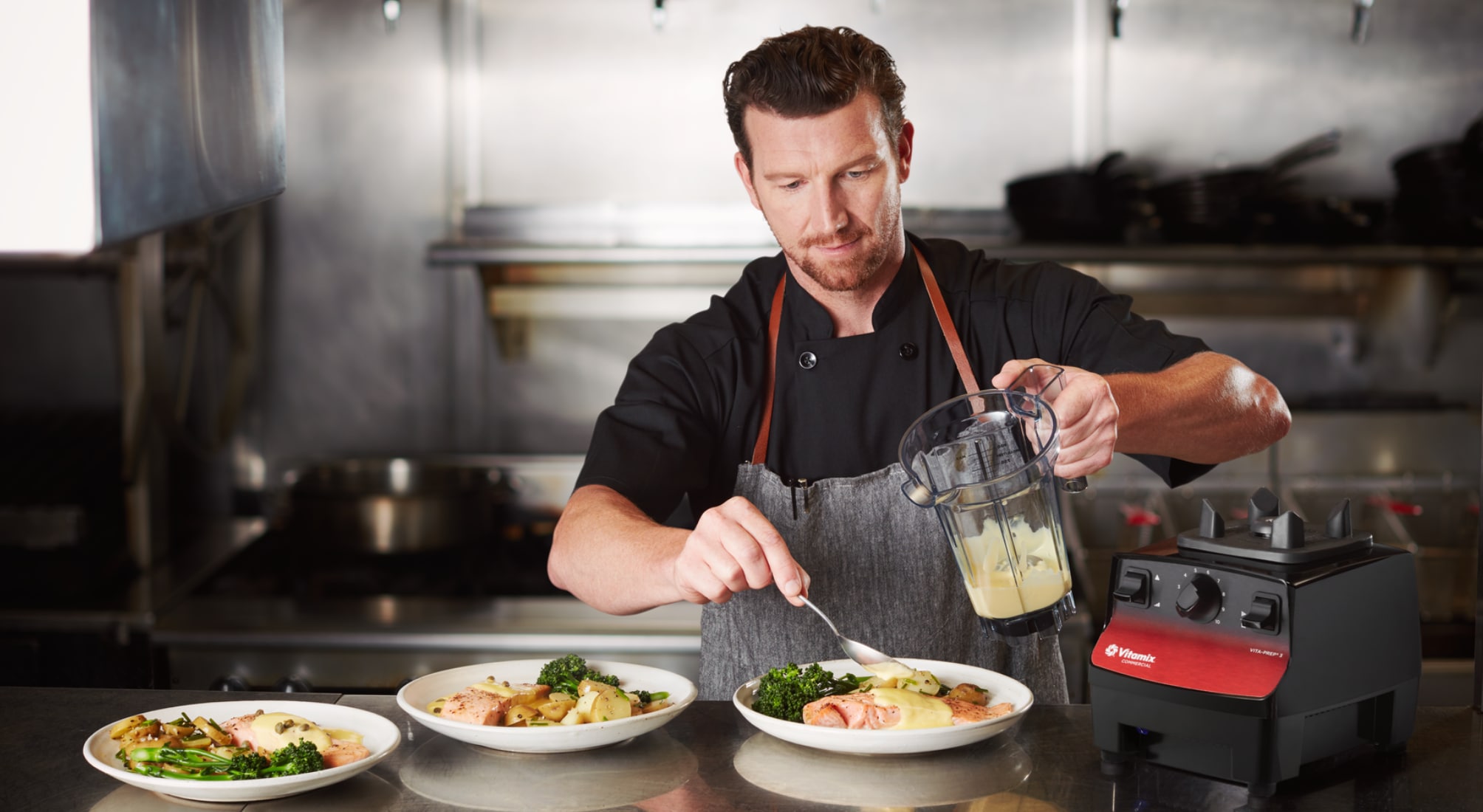Back-of-House Blender Challenges
For back-of-house chefs and line cooks, the blender is a seminal tool that not only mixes ingredients but also changes their texture. It’s a workhorse essential to exploring new recipes, as well as managing the heavy workload of peak hours in the kitchen. Most chefs and line cooks know their blenders well and are experts at manipulating them to get the effect they want. Unlike the front-of-house, the issues here are not about training and turnover of personnel. Rather, they relate to the blender’s power, performance, and dependability. The blender needs to process especially tough ingredients and blend purées, as well as emulsions. It also needs to hold up over time while performing a wide range of tasks.
Tough Ingredients
At the back-of-house, tough ingredients are not only tough, fibrous greens and fruit seeds, but also starchy root vegetables, leathery, dried ingredients, such as dates, dried chile peppers, and sun-dried tomatoes. With the trend toward plant-based and whole foods, demands on commercial blenders have only gone up. There is now an emphasis on eliminating waste by using the whole plant or other ingredients formerly that were thrown away, for example, eggshells, skins and rinds, the tops of root vegetables, or even certain shellfish shells. Plus, enterprising chefs are grinding their own herbs, as well as grinding and mixing their own whole grains.
Many commercial blenders are simply incapable of managing these kinds of tasks repeatedly over many hours a day. The motor will slow down, overheat, or fail permanently. The strain is felt on the drivetrain components, which may be made of plastic rather than metal, or on the bearings, which may not be engineered for long life. Some blenders may perform adequately out of the box but quickly or steadily degrade over the first weeks or months of use. Others may never be capable of the high speeds required to get the most out of the ingredients. When the blender underperforms, various results may follow:
- You may not be able to use certain ingredients.
- You may not get the most out of your ingredients so you may have to use more.
- You may have to strain fibrous elements out of your purées or sauces.
- You may have to accept less-than-satisfactory results, compromising on the texture or mouthfeel of the sauce or purée.
Of course, none of these are palatable options to exacting culinary professionals.

Slower Speeds and Finesse
Back-of-house processes often require finesse – not just high speeds on the blender. A downside to food processors and some commercial blenders is the limitation in terms of speed – the lack of range and gradients. Also, when you set the speed on 2 or 4, do you reliably get the same speed every time, regardless of the load on the motor? Lower speeds are important for fully mixing the ingredients and chopping them into uniform size before gradually increasing the speed as you fully process through the ingredients. Emulsions require slow speeds while drizzling in the oil. Similarly, batters and doughs need a low speed as the wet and dry ingredients are integrated. Soups, sauces, and other liquids may benefit from visible inclusions, such as flecks of leafy greens, and these are best produced with gradients in speed.
A Wide Range of Tasks
Back-of-house culinary professionals typically ask a lot of their commercial blenders, as they perform a wide range of tasks that not all machines can manage, from chopping vegetables and meats, to grinding dry ingredients, and blending thick purées, pestos, and pâtés, as well as thinner soups and emulsions. To cover this full range of tasks, the back-of-house blender must function as a kind of utility player in baseball, rather than a pitcher who is trained for one main task. The blender’s motor, as well as the blade geometry and container contours, must be calibrated for competing tasks. This is an area where some blender manufacturers cut corners. The blender may be good at some tasks but not all. Food processors try to cover the range of tasks by providing an assortment of attachments and containers, but for the busy back-of-house chef, these various accessories may be a lot to keep track of and store.
Another common design failure for commercial blenders and food processors: they may not be optimized for folding ingredients into the blade. Food processors are typically broader and less vertical, so they are not able to draw the ingredients into the center of a vortex, which is necessary for certain tasks.
Occasional User Issues
Most professionals know that the order of ingredients does affect the results. Liquid and softer ingredients – those that will break down more easily – should go in the bottom of the container, followed by harder and drier ingredients. If you’re loading the ingredients in a different order, it could lead to less-than-satisfactory results or undue strain on the motor. In some cases, depending on the consistency of the mixture, a tamper may be necessary to ensure the ingredients are mixing fully.
The design of Vitamix® machines is optimized for high speeds, as these keep the motor running cool. Whenever possible, you should run the machine at high speeds. Lower speeds are appropriate for when you are initially mixing ingredients or performing a special low-speed process, like emulsion.

Large Batches
Large batches can be challenging for some commercial machines because they require a lot of power. Large batches come into play when making batters; purées, sauces, or soups; and smoothies at schools, healthcare facilities, and restaurants. Large batches may require help from the tamper, but a high-performance machine should be capable of pulling the ingredients into the blade’s vortex and producing a consistent result with the desired texture.
For especially large batches, in excess of 48 ounces, an extra-large machine may be required. The Vitamix XL®, for example, holds 1.5 gallons, or about 24 smoothie servings, as opposed to eight for a 48-ounce container. With the help of a tamper, this machine is capable of mixing a 185-ounce large-batch smoothie, consisting of yogurt and frozen fruit in about a minute. In other words, it takes about a quarter of the time it would take to run three batches in a 48-ounce container because you are not reloading the container three times. Many organizations employ multiple extra-large containers with a single extra-large machine, enabling several people to be involved in large-batch preparation – one to load, one to mix, and another to pour.
For chefs creating complex recipes in large quantities, an extra-large blender can be especially efficient because they do not need to create and taste the recipe three times and aim for consistency between them. Instead, they are creating the recipe only once in the XL® container.
Conclusion– Focus on the Result
For the most part, when back-of-house culinary professionals are not able to achieve the results that they desire in their commercial blender, the blender design and overall power are probably the issue. Typically, differences in blender design are not single-faceted, like specifications that you might see on the side of the box. They are the product of a constellation of design features that work together to produce a result, including the quality of motor and drivetrain components, the pitch and angle of the blade, and the geometry of the container. These are not easily compared between machines. So if you have questions or doubts about your blender, focus on what’s coming out of the container. Are you happy with the results? Most professionals who acquire a high-performance blender like Vitamix have similar reactions after a few days or weeks of use: “I didn’t realize I could achieve this quality in the output” or “I didn’t know there were so many things I could do with a high-performance blender.”



